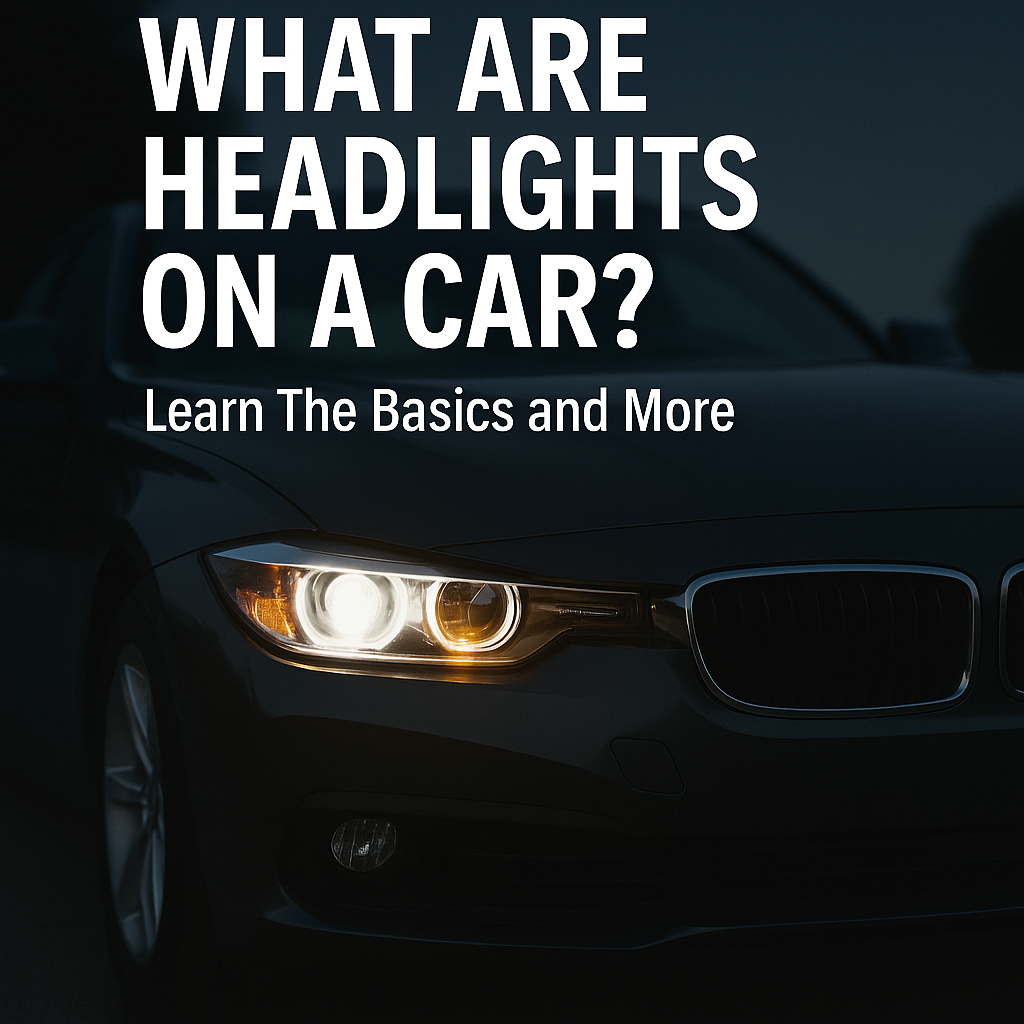When driving at night or in poor visibility conditions, being able to see the road ahead is crucial for safety. But what exactly are headlights on a car?
Headlights are bright, forward-facing lights mounted on the front of vehicles that illuminate the road ahead during nighttime driving or low-visibility conditions. They are required by law on all passenger vehicles and typically consist of two identical lights.
While this basic definition covers the essentials, there's much more to understand about headlights, including the different types available, how they work, and important maintenance requirements that every driver should know. Understanding these details can help you make better decisions about your vehicle's lighting and ensure safer driving conditions.
Different Types Of Car Headlights
Modern vehicles come equipped with one of three main types of headlight systems. Halogen headlights, which are the most common and affordable, use a tungsten filament and halogen gas to produce light. HID (High-Intensity Discharge) lights, also known as xenon lights, create brighter illumination through an electric arc between tungsten electrodes. LED headlights, the newest technology, use light-emitting diodes to produce bright, energy-efficient lighting that can last the lifetime of the vehicle.
How Do Headlights Work?
Headlights operate through a relatively simple electrical system connected to your car's battery and alternator. When you turn on your headlights, electricity flows through the system to power the bulbs. Most modern cars have multiple settings, including low beams for normal nighttime driving and high beams for rural or particularly dark roads. Many newer vehicles also feature automatic headlights that use light sensors to detect when illumination is needed and turn on automatically.
Essential Headlight Maintenance Tips
Regular headlight maintenance is crucial for safe driving and legal compliance. Over time, headlight lenses can become yellowed or cloudy, significantly reducing light output. This degradation typically occurs due to UV exposure and environmental factors. Cleaning and restoring headlight lenses every 1-2 years can help maintain optimal visibility. Additionally, bulbs should be replaced immediately when they burn out, and many experts recommend replacing them in pairs to ensure even illumination. Most halogen bulbs last 500-1,000 hours, while HID and LED lights can last significantly longer.
Common Headlight Problems And Solutions
One of the most frequent headlight issues drivers encounter is dim lighting, which can be caused by dirty or oxidized lenses, aging bulbs, or electrical problems. Another common problem is misaligned headlights, which can blind oncoming traffic or fail to properly illuminate the road. If one headlight is out, it's typically due to a burnt-out bulb, though it could also indicate a fuse or wiring issue. Most of these problems can be diagnosed and fixed by a professional mechanic, though some maintenance tasks like bulb replacement can often be done at home.
Are Aftermarket Headlights Worth The Investment
The decision to upgrade to aftermarket lighting depends on several factors, including your driving habits and budget. While factory-installed headlights meet all safety requirements, aftermarket options can provide enhanced visibility and styling. However, it's crucial to choose DOT-approved aftermarket lights to ensure they're legal and safe. High-quality LED conversion kits typically cost between $100-300 per pair, while premium HID systems can range from $200-500. Before making any modifications, check local regulations, as some jurisdictions have specific requirements about headlight modifications and color temperature ratings.
Taking Action On Your Headlight Knowledge
Now that you understand what headlights are and how they work, take a moment to inspect your vehicle's headlights during daylight hours. Look for any yellowing, cloudiness, or dimness that might indicate it's time for maintenance or replacement. This simple check could make the difference between safe nighttime driving and putting yourself at unnecessary risk.


